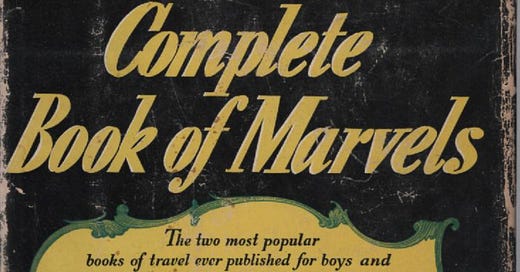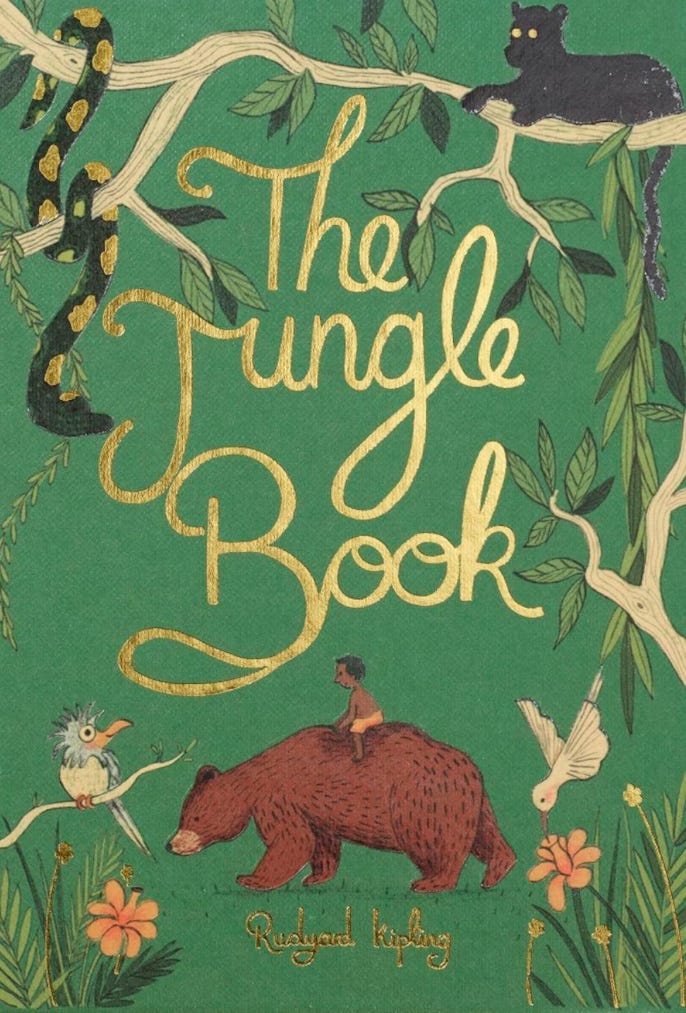Amy runs the blog Around the Thicket, where she writes about balancing Charlotte Mason principles with real-life practicalities. I first stumbled across Amy’s writing several years ago when I found her post Five Ways Mom Can Take Five Without Her Phone. As I expect almost all of you will understand, this is a very real challenge! I’m delighted to share this glimpse into Amy’s life with her husband and three boys.
It’s a Tuesday morning. For the past week I’ve slept late, thanks to jet lag after a six-week visit to my parents’ home in the US. Now we’re back in the UK and I’m settling into my usual routine. I wake up around six for reading and devotions, followed by a bit of work on my blog and other projects. My three boys (10, 8, and 6) are still sleeping late, emerging from their room around 8am, so I enjoy the quiet and solitude before the chaos breaks out. I’ve missed this daily ritual, punctuated with multiple cups of tea, and it feels good to get back.
But while I try to take time every morning to get ready for the day ahead, I started preparing about two weeks ago. That’s when I sat down to do my planning for the term. If you’re not a planner, look away now, or at least prepare to read the rest of this post through squinted eyes as you shudder in horror. Because with home educating, I am a Planner. Come on over, I’ll show you my binder!
Why do I plan? For starters, there is no way I could ever hold all of my ideas and hopes for the term in my head. Plus, a solid plan means that I put most of my daily effort into educating my children rather than into making decisions on the fly. But mostly, I like the confidence that we are heading in the direction we want to go. We follow Charlotte Mason’s philosophy of education, so I want to give my kids living ideas that span the subject areas of ‘God, the Universe, and Mankind’. Broad and varied is my theme, and a plan helps me make that happen.
To help me plan, I use Ambleside Online as the foundation of our curriculum, although I balance out some of the American history, geography, and nature lore with British options and additions. Since my kids are British and American, this works well for us.
Enough about planning, though—the kids are up. After several pajama days, I’ve dictated that everyone must get dressed before breakfast. Cue multiple, noisy opinions ranging from, “I don’t want to!” to “Can’t I get dressed right after breakfast?” I hold my ground—food is a good motivator for my kids—and several pairs of feet trample up and down the stairs.
My husband is in charge of breakfast every day, which gives me a few more minutes’ grace before I’m fully in ‘mom mode’, so I nip upstairs to get dressed. After dodging a few more complaints about having to put on ‘daytime clothes’ so early (at 8:30), all five of us are at the table eating breakfast.
Once I finish, I pull out my binder and we get started on Morning Time. These are the subjects that my boys do together every day. Morning Time, to me, is about building family culture, a shared set of stories, songs, and ideas. My husband sits in on this as he eats, then disappears upstairs where he works from home. I’m glad that he gets to share in what I do with the kids.
Today I read aloud a poem, a chapter from the Bible, and a bit from a book about astronomy. I like to mix up our readings with singing and artist study (this term we’re looking at Monet paintings), but singing with muesli in your mouth is gross. We circle back to it once the kids finish eating and the table is clear.
After our time together, my eldest gets his binder with a daily checklist of ‘independent work’. He collects the books and materials he needs and then heads upstairs. I suspect his favorite part of the day is holing up with his books while his brothers are busy somewhere else. It must run in the family because I love doing the same thing.
Meanwhile, I read a retelling of As You Like It by Edith Nesbit to my younger boys. In true Charlotte Mason style, I ask them to narrate the story back to me after I read it. My boys’ narrations range from wildly enthusiastic dramatic retellings to I-will-give-you-one-single-sentence-and-that-is-it summaries. Today we land somewhere in the middle and I’m ok with that. Now my middle guy collects what he needs for his independent work and moves to the sofa. Morning time is over, and it’s time for one-on-one work with Mom, starting with my youngest.
At six, my youngest son is nearly halfway through his first year of more structured lessons. Today, he has piano practice, handwriting, reading practice, and a bit of math (we use the MEP math program, which I find pretty parent-intensive, but free!). I also read aloud a bit of ‘The Elephant’s Child’ from Just So Stories and Bonny’s Big Day from James Herriot’s Treasury for Children.
On any given day my youngest could love or hate any of his subjects. I’m never sure whether he is going to be gung-ho for math or drag his feet into history. I make it my goal to let any grumpiness roll off my shoulders. Six is still young, so I try not to take his ever-changing opinions personally.
Once we finish up together, he goes to play and I call my middle guy over from the sofa. Having kids work independently is great, and it keeps school from taking ten hours every day. However, there is always a risk that independent work either won’t get finished or won’t be done well. The first thing I do, then, is to go over his checklist with him. This is the best way for me to hold him accountable for the work he needs to do.
Looking over his list, I can see that he did a bit of math on his own. This is great, but he’s not done enough, in my opinion, so we work some more problems together in spite of his protests. He also read a chapter of a history book (after complaining about how difficult it is), so I ask him to tell me what he read about. No surprise, he gives a brilliant narration, demonstrating that the book is certainly not too hard.
With independent work checked, my middle guy settles in for some one-on-one time with me. He has piano and writing practice like his younger brother, then I read a chapter of Our Island Story and a bit from The Jungle Book. My son always begs for Jungle Book and is furious when I have to stop reading for the day. However, he has more to do, so once we wrap up narrations, he goes off with my computer to record a video nature journal entry. The boys took our telescope out over the weekend, and I want him to share what he noticed.
It’s past noon. I take a break for a snack, make lunch for my youngest son, and ask my eldest to make himself something to eat. My middle guy will fix himself lunch after he finishes his recording. Stopping for lunch is a new development in our homeschool days. My inclination is to power through each morning and save lunch for when we’re finished. However, when my youngest started more structured lessons, lunch ended up so late in the afternoon that everyone got hangry. Including me. A lunch break is definitely necessary.
When my eldest son comes down, I take his checklist and review what he’s done so far. At ten, he has quite a bit more to do independently than his eight-year-old brother: three or four books to read each day for starters, along with math facts and a drawing lesson. He’s ticked off his books and math facts, and he’s brought down a half finished drawing. I ask him for his narrations as we potter in the kitchen, and I’m pretty impressed with how well he’s doing.
My eldest also has writing and piano practice, which I supervise, and then we work through two pages of math together. He’s been getting frustrated with math lately, and so I take a moment to give a big peptalk and to talk strategy for nailing down those multiplication facts. Finally, I read him a chapter of Halliburton’s Book of Marvels. Even though my eldest is a great reader and could easily manage all his school books this term, I like to keep a book or two to read together. It’s quality time and a good shared experience for us. Today it’s a chapter on the Golden Gate Bridge, and he is amazed at the size of the cables and the engineering of the bridge.
That reading finishes the structured portion of our school day. It’s about two thirty in the afternoon. We’ve finished nearly everything on the plan for the day. While it might sound like a lot, each item on the list is only a few pages, a few problems, or a short activity. Following Charlotte Mason’s suggestions for short and varied lessons keeps us from feeling like school is a drudgery. I also save our favorite things for last (like The Book of Marvels), which motivates us to get to the end.
I’m ready for a break. I have a bit more lunch, and then I head upstairs with a cup of tea to hide for about an hour while the kids play. I’m pretty extroverted, but school is full on, and I need a little time to decompress. When I’m ready to emerge, I have the kids pack their bags to walk to the pool. They are in swim lessons one day a week, but I want them to have time to play in the water, too.
We swim for an hour, but the walk added a half an hour on either end. It also takes my children a half an hour to shower and change after the swim, so we only get home around six and I get dinner ready in a record 25 minutes. After we eat tis late-for-us dinner, it’s the typical rush for pajamas, teeth, and tidying up so that Daddy can read. I’m feeling tired, so I put my pajamas on while the kids are getting ready for bed.
Once we are finally ready (someone always forgets to brush their teeth), my husband reads a chapter of The Mysterious Benedict Society. More and more often I choose to sit in on the kids’ story with Daddy because the books are so fun and I don’t want to miss out. Plus, it’s a good chance to do a bit of knitting.
The kids have lights out around nine. This is later than I would like, but I want to know what happens in their story as much as they do, so I don’t say anything when my husband keeps reading. After I say goodnight, I’m straight into bed to read and then off to sleep myself. It’s been a good day, but a full one, and I’m ready to rest.
If you liked this peek into Amy’s day, take a look at her blog, Around the Thicket, and her podcast, Thinking Love.
And if you’re new to How We Homeschool, you might like to dip into some previous Special Guest Editions:
Jamey Fisher-Perkins, singing songs and throwing ice in the pond on a chilly day in Wales.
Annelise Roberts, homeschooling her five children in Colorado and finding time for a nap!
Victoria, whose daughter enjoyed a day of horse-riding, piano-playing, and Pokemon.
Oliver Cresswell, regulating emotions and enjoying a new puppy in Nova Scotia.
Will Orr-Ewing on flexischooling alongside Charlotte Mason.
Dixie Dillon-Lane on homeschooling through sickness.
Eloise Rickman, on putting children’s rights at the heart of home education.
Ruth Gaskovski on building community.
Katherine Seat getting out of the house on a noisy day in Cambodia.
Renee’s account of a homeschool day with her son, who has autism.
Mary-Ann Horley’s account of home education at home and on holiday.
Allyse Hopkins’ very relatable day with her family of four in New Zealand.
Susie Wales’ life with her three boys in Florida.
Rachael Ringenberg’s thoughtful glimpse into her life with four girls in Vermont.
Joel Bowman’s ‘away schooling’, travelling around the classical world with an eight year old.
If you’d like to be next, get in touch! Everyone is welcome, whatever your homeschool looks like.
Thanks for reading. If you’re not subscribed, sign up for free and never miss a post. Subscribers get regular ‘how we homeschooled today’ updates, guest posts from homeschoolers around the world, and lots of book and resource recommendations. Come and join us!











What a lovely glimpse into your day, Amy. I especially liked your comments about independent work; having a child work independently does not mean you are not involved.
I use a binder, too, and many of these same resources!
I adore reading different accounts of home education - and especially the inclusion of a few grumbles - sounds like a beautifully full day! Also, does anyone else screenshot every picture of a book for later research?! 🧐